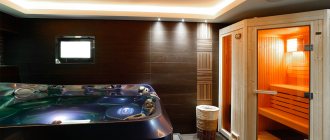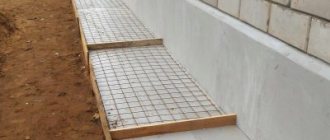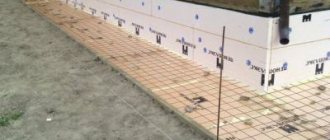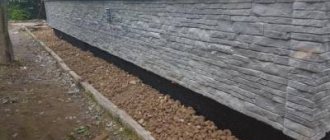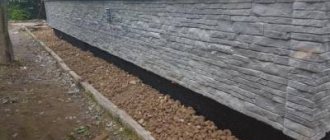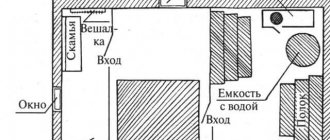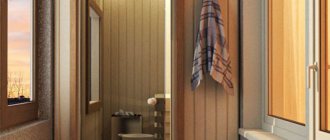According to the current SanPiN, PUE, SP and SNiP, a sauna in a bathroom in an apartment is allowed for permanent use. It is impossible to legalize such redevelopment in other premises of an apartment building. The heating device is an electric or infrared stove with a conventional, ceramic or carbon emitter. For the hammam mode, a steam generator can be used.
Do you need permits for redevelopment?
Clause 8.12 of SNiP 31-01 specifies the requirements for designing a sauna in an apartment building:
- steam room volume less than 24 m³;
- only in buildings with slab floors;
- installation of a factory oven with automatic shutdown after 8 hours or at a temperature of +130°C;
Sauna stove.
- the minimum distance of the heating device to the walls is 20 cm;
- installation of a heat-insulating board made of non-combustible material above the stove;
- air exchange rate 0.5 when not in operation, 10 cubic meters/hour for each user when the stove is on;
- prohibition on placing saunas above/under residential premises;
- use of a fire-retarding valve in the ventilation duct according to SNiP 41-01 regulations.
Fire damper
Manufacturing from scratch or installing a ready-made modular bathhouse, sauna, or hammam in an apartment falls into the redevelopment category by default. Because to connect a heating device to it, you will have to install electrical wiring and install ventilation.
This is already enough for the actual state of the layout to not coincide with the sketch plan from the documentation stored in the BTI. The apartment will become impossible to sell; the regulatory authorities of electricity suppliers and the management company may legally demand that the layout be brought back to its original form.
Coordination of the redevelopment takes place in several stages with visits to the SES, Rospotrebnadzor department, housing inspection, management company, fire service and architectural department of the local government.
It is the sauna that is specified in the building regulations, since its temperature and humidity conditions correspond to the values of +100°C ... +120°C and 15%, respectively. The bathhouse is characterized by a lower temperature of +80°C and high humidity - from 40%. When designing a Turkish hammam in a bathroom, you should take into account that at a temperature of 50°C the humidity here can reach 100%, which requires high quality ventilation.
Required Permissions
It is prohibited to build saunas in wooden apartment buildings. In block and brick buildings, the construction of a steam room is allowed, but additional equipment cannot be placed in living rooms and kitchens. Another place for a steam room can be used, but only after agreement with the relevant authorities - strict requirements are imposed on such housing conversion, regulated by established building standards.
Placing and building a home sauna in an apartment is permitted.
The finished project must be submitted for consideration to the HOA, SES, Rospotrebnadzor, and the State Fire Service.
The list of authorities may be supplemented depending on the region of residence of the apartment owners. To install a mini-sauna in a bathroom, no special approvals are required.
Selecting a room
According to statistics, users most often place miniature sauna cabins in the following rooms of the apartment:
- a bathroom is the best solution, but an area of more than 3 m³ is required;
- pantry - you will have to run to the bathroom to rinse;
- balcony/loggia is the most expensive and inconvenient option.
In principle, for a sauna there is no need to install cold water, hot water, or sewer lines. However, immediately upon leaving the booth, the problem of washing off sweat and further washing arises. Therefore, the bathroom is an ideal option for installing an industrially produced cubicle or when making it yourself.
A shower stall usually does not fit in a pantry along with a sauna. Walking through all or some part of the apartment sweaty and naked is uncomfortable and extremely unhygienic.
The same is true for the loggia/balcony. Moreover, in this case you will have to pull the power cable there.
The balcony room is not heated; in winter, when using a steam room, moisture will definitely condense and freeze on the windows. Therefore, a bath in the bathroom is initially the most inexpensive, convenient and rational option.
However, the size of the bathroom does not always allow it to be included in the project in this particular room. The two remaining options are used, although they are not comfortable.
Attention: Basements and attics of apartment buildings are common property. Therefore, the use of mini-saunas in them is strictly prohibited.
The permissible load on a balcony slab in a panel/brick building is 200 kg/m². For a loggia this figure is even higher. Therefore, from the point of view of permitted loads, it is possible to install or build a steam room here, quite officially.
An electric oven has a power of 3 - 5 kW, which is quite comparable with an electric stove and even powerful boilers, heaters, and water heater heating elements. With moderate water consumption - only to supply steam when splashing onto stones, no penalties will follow. But, only on the condition that there is no shower stall on the balcony, and the space is reliably isolated from the lower and upper loggia.
There is a practice of rinsing in fonts located on balconies near mini-saunas. But here you need to calculate the loads, and decide whether the living room with a hose stretched through it for filling and draining water will look too “collective farm”.
A bathhouse in the house is an increased fire hazard
Even a free-standing bathhouse is always an object of increased fire danger. When building a bathhouse, we are always extremely careful, we try to follow all fire safety rules to the letter, and when operating the bathhouse, too, but this does not always help. Even on our forum, where people’s awareness and responsible attitude towards their lives are several orders of magnitude higher than the “hospital average,” no, no, and the following questions arise:
Seni21
Yesterday my sauna burned down, of course, it was heated very hot to 120 degrees, and in order to cool it, the last steamer intensively poured water onto the heater. I saw the flame after 2.5 hours, it ignited, apparently near the pipe on the ceiling. In short, I was left without a bathhouse, the neighbors didn’t take care of it, they put out everything on time.
Now let's imagine what would happen if this bathhouse were not far from the house, but right in it.
ZYBY FORUMHOUSE Member
I have always given other arguments “against”, and now I will add one more: if it burns down, then it will be one bathhouse, and not the whole house!
bond2 FORUMHOUSE Member
In my opinion, the fire hazard, especially in a wooden house, should outweigh all the advantages of a built-in bathhouse. And we only get pleasure from walking from the bathhouse to the house, and in winter too.
Sauna type
There is a classification of household steam rooms for use in an apartment according to several criteria:
- steam room mode - hammam with high humidity and low temperature, sauna with exactly the opposite characteristics, bathhouse as a golden mean between them;
- location inside the apartment - for the bathroom, storage room, balcony/loggia;
- equipment - with or without shower;
Sauna with shower.
- type of heating device - electric heater, infrared oven.
Additionally, home sauna manufacturers have their own classification, sometimes differing in details:
- design – finishing material, front door, shelves;
- design - island type, built-in, with a decorative facade;
- size – single, double;
- configuration – straight, angular;
Corner
- heater - with ceramic, salt, carbon emitters, built-in steam generator, Finnish, infrared, combined;
- class – Premium, Standard, Economy.
Combination stoves are considered the most convenient. In them you can switch bath, hammam, sauna modes, changing the humidity and heating temperature. IR heaters are absolutely safe, even for heart patients, the elderly and children. They do not heat the air, but act directly on the body and have a healing and preventive effect.
Steam generators are used in bathhouses and hammams; they produce portions of dispersed air saturated with moisture without dousing hot stones with water.
Phytobarrel
A phyto-barrel is a barrel-shaped structure made of cedar wood. The area of such a steam room is 1 square meter. Suitable for apartments with a regular layout. Does not exceed human height in height.
Equipped with a steam generator. Designed for a power of 2 kW. Some designs are equipped with a balm sprayer.
Companies sell phyto-barrels with installation. You shouldn’t equip your bathroom with them yourself.
Project
When purchasing a factory mini steam room, installation is usually performed by a team from the manufacturer or dealer. Sauna integration problems are dealt with by certified specialists. To build such a structure on their own in the bathroom, the apartment owner will have to prepare the project themselves, taking into account the following nuances:
- PUE requirements - the stove requires a separate line from a power cable with an RCD or differential circuit breaker, a grounding wire, lighting fixtures must be waterproof;
Connecting an electric furnace
- SP and SNiP regulations - it is necessary to waterproof “wet” areas under the layer of cladding, rough finishing materials, cutting off moist air from the load-bearing structures of the building;
Floor waterproofing
- SanPiN standards - ventilation with an air exchange volume of 10 cubic meters per hour per user, the use of cladding with high characteristics of moisture resistance and hygiene;
Wood cladding
- fire safety - the use of finishing materials that do not support combustion, do not emit toxic compounds dangerous to humans when exposed to high temperatures, protection of sections of the walls, floor, and ceiling of the cabin with special fire-resistant materials.
Interesting model
One of the fire safety requirements in this case is 100% likely to be grossly violated. Since for interior walls a standard wooden frame or two of its modern varieties are usually used - imitation timber, block house.
Therefore, decorative strips are necessarily impregnated with fire retardant, and a smoke sensor with a fire extinguishing system is mounted on the ceiling for reliability. It most likely won’t save the lining, but it will get rid of the “Arsonist” stigma and allow you to maintain normal relations with your neighbors.
The steam room cabin can be built into the room or have all the necessary enclosing structures - walls, ceiling, floor. In the first case, the insulating layers necessary for its normal operation - sheet insulation, film reflective insulation, vapor barrier, waterproofing, noise-absorbing materials - are applied to one or more walls of the room.
Insulation allows you to retain the heat generated by the heating device in almost its entirety inside the structure, rather than spending it first on heating the walls and ceilings. This will allow you to quickly enter steam mode with minimal energy consumption, in this case, electricity.
In the second option, all these layers are located inside the pie of the enclosing structures of the cabin. Therefore, additional waterproofing is not needed here; it is already included in the price of the steam room.
Ventilation on the balcony is designed according to the following scheme:
- the influx of outside air is carried out through valves in the window glazing units of the loggia;
- it is supplied inside the steam room by a duct fan through a pipe of suitable diameter cut into the wall of the cabin;
- the exhaust is made to the street, for which a through hole is made in the wall or blind window block of the balcony;
- the fan must have two modes - one to ensure a standard volume of air exchange, the second more powerful for quick ventilation of the cabin after its intended use.
When converting storage rooms into a sauna, ventilation ducts are laid to the exhaust ducts of the apartment, usually to the bathroom. When installing/manufacturing a steam room inside a bathroom, a corrugation is used to connect the hood to a standard ventilation duct.
Power regulators, heater or IR emitter mode switches, lighting switches, and other electronic display and control elements are located on the outer wall of the cabin (balcony, bathroom) or room (pantry).
DIY sauna installation
And, of course, you can always make a sauna with your own hands. This approach is considered the most correct among people who consider the bathhouse as their own hobby.
Having decided to make a sauna yourself, you need to determine what it will be made of, what it will look like, and build it specifically into your bathroom or onto your balcony. You can even decorate it to your liking with carvings or paintings.
They always start with preparing the project. And the project is a diagram that indicates where the sauna will be located (most often it is a corner of the bathroom), what its area will be, its size, what shape its door will be, how shelves and a stove will be placed inside. At this stage you will have to work with a tape measure: you need to carefully measure the size of the bathroom so that later, at the construction stage, it does not turn out that the frame is suddenly 2 centimeters higher than the ceiling and, accordingly, does not fit. Or that the door is not long enough, and there remains a gap between it and the lintel.
Once you have figured out the dimensions, all that remains is to figure out what materials and in what quantities are needed. Usually a sauna is made from thin beams, covering them with lining sheets, but you can always go your own way and come up with something else. Then you can get down to business.
Construction of sauna walls
Before you tackle the walls, you need to deal with the floor. You can leave it as it was in the bathroom (most often it is tile), or you can lay boards on it, fitting them tightly together. The best option is a warm floor covered with tiles on top. It will not need to be heated additionally, and no one’s feet will get cold on it.
When the floor is ready, a frame is made. It is made from thin beams that are fastened together with brackets or screws. Then it is covered with glassine or cellophane - this is necessary so that steam does not escape. Mineral wool is placed on top of glassine or cellophane, and foil is placed on top of it - this is a layer of thermal insulation, thanks to which the sauna will always be warm.
When the thermal insulation layer is ready, the sauna is covered with clapboard on both sides. It is best to take alder or birch - cheap and fragrant wood species. But you shouldn’t take coniferous trees - they emit resins, the concentration of which in the apartment will be too high and can be harmful to health.
When the frame is completely sheathed both inside and outside, and on the sides of the walls and ceiling, all that remains is to smooth out the uneven surfaces so that you are not afraid to catch a splinter.
Ventilation
Ventilation is usually cut in advance, but it can also be done in a finished frame. As a rule, this is a small hole on the wall opposite the one where the stove will be located. A small fan is inserted into the hole, which will circulate the air and prevent it from stagnating.
It is important that there is good ventilation in the bathroom. Otherwise, the internal ventilation of the sauna will be useless.
Sauna equipment
Equipping a sauna from the inside is not difficult at all. Needed:
- shelves on which you can sit or lie down. Their width is usually at least 60 cm, the height is determined by the desires of those who will steam. The lowest ones are usually located at a height of half a meter, the next ones are 30 centimeters higher. It is important that the shelves are smooth. They can look whatever they want;
- stove. Either electric with steam generation, or infrared, with the same function. The first one costs a little less, the second one is considered more useful. Be sure to have a fuse that will turn off the stove when its temperature exceeds 130 degrees.
Nothing else can be placed inside. Minimalism is also a good way to decorate a sauna.
Cabin interior design
The design of a sauna is what makes it unique. You can decorate it with accessories, you can initially make it interesting and unusual. These will look good:
- shelves of unusual shape. For example, you can make them round or wavy. You can polish them to an almost unnatural smoothness, you can even make them uneven, with differences, so that it is especially comfortable to lie on them;
- painting. You need to use only natural paints that do not emit anything harmful into the air. You can draw anywhere. For example, put a plot picture from a book or from life on the ceiling. You can even decorate the stove, although you will have to buy special, heat-resistant paint for this. And, of course, you can apply a pattern to the floor. The main thing is to have a general idea of how everything should look as a result, so that all the patterns and elements of the painting are consistent and resonate. Otherwise you'll just end up with an unattractive mess;
- thread. If painting requires special paint, then carving requires only skill and knives for carving wood. You can depict anything - geometric and floral patterns, elements of patterns from the Scandinavian epic, carved portraits, carved flowers. If there is no talent, you can invite a master who will offer interesting ideas and help implement them. But you need to remember that you shouldn’t make carved shelves - then it will be unpleasant to lie on them;
- LED strips. They can easily withstand temperature changes, and you can adjust the brightness and color. As a result, on one day the sauna can be light and cozy with yellow color, and on another day an atmosphere of mystery can reign in it thanks to muted lilac. You can stretch the tape along the floor, along the edges of shelves, even along the ceiling - whatever your imagination allows;
- lamps. You can choose beautiful ones, with metallic curls, for example. You should not install lamps made of plastic - they do not tolerate temperature changes well. Best made of metal and glass.
You can remember the styles and embody the chalet or Russian style in the sauna. Or you can leave the sauna decorated in minimalism - just shelves, a stove, light and nothing else. This is often enough.
Door
The door is the final touch, after which the tools can be put away until the next repair. There are few requirements for her. It should also be made of wood, exactly the size of the doorway. Plus, it should not have a mechanical lock: due to constant temperature changes, it may one day jam, and this will be unpleasant. The use of magnetic clamps is considered optimal.
The door can also look whatever you want. It may be carved or painted. It may have colored glass inserts, it may just beg to be photographed in a fashion magazine. Or it may be completely devoid of frills.
It is quite possible to make a sauna in an apartment - even if it is a Khrushchev building. It is enough to find a suitable design for a bathhouse in an apartment, get approval from the authorities and decide whether to buy a frame or make it yourself.
Sauna equipment
The heart of the steam room is traditionally a heating device - a heater for a bath, an infrared or electric heater for a sauna, a stove with a steam generator for a hammam. It can have one or more temperature and humidity modes, and be equipped with additional options - aromatherapy, salt dies.
If the steam room is small in size, you can make a bath canopy of 2–3 steps inside. If space allows, a full-height lounger is arranged, on which visitors hover each other with brooms.
The stove is protected by enclosing structures - railings on racks. Waterproof lampshades and LED strip are used for lighting. Temperature and/or humidity control is carried out using built-in sensors.
To ensure maximum comfort, a shower and a tray with a drain connected to the drainage system can be built into the cabin. Removable, retractable, transformable seats, shelves, floors simplify cleaning and maintenance of the steam room.
Glass doors are convenient because they do not deform from humidity and temperature, unlike wooden ones, but they are more expensive.
Types of saunas for your home
In order for you to be able to place a sauna in your apartment without any problems, the room must meet certain standards. Firstly, it must be fireproof, and secondly, it must be sealed in order not to let hot air out of the steam room.
Sauna in the house - phyto-barrel
If you are not planning a large steam room, then you can get by with the so-called phyto-barrel. This is a wooden structure with a heating element built inside. Externally, its outline resembles an ordinary barrel, but only larger in size. In order for a person to sit comfortably inside while taking bath procedures, a bench is placed in the barrel. The body is completely lowered into the barrel, while the person’s head remains outside. While in such a container, you can adjust the degree of heating and add various herbal infusions from medicinal herbs to create steam. The barrel is easy to maintain and does not take up much space. Only one person can steam in it.
Sauna in a fabric house
This sauna is practically a camping option for lovers of thermal treatments. It consists of a special heating mechanism. In this case, hot air is blown into the frame structure, the walls of which are made of dense tarpaulin fabric. It allows you to maintain the set temperature for a long time. During the procedure, the head of the steamer, as in the case of the phyto-barrel, remains outside. After the session in the steam room comes to an end, the body is disassembled and compactly packed.
Mini sauna in the house
Existing models of mini-saunas differ in size, the power of the elements responsible for heating, the shape of the body and the materials from which they are made. Heating elements or infrared emitters are used as a source for heating air in mini saunas. Models differ in cabin shape and size.
How to arrange a mini-sauna in your own home?
First, decide where the sauna will be located. Alternatively, you can place it in:
- bathroom;
- kitchen;
- balcony;
- pantry;
- corridor.
Important to remember!
Before installing the sauna, it is necessary to treat all surfaces in the room with an antiseptic solution. This will help you prevent mold from forming. All wooden elements of the sauna must be impregnated with a special composition that will help the wood withstand high temperatures.
Sauna in the house with infrared radiation
An alternative sauna option for home use is an infrared sauna. The advantage of this model is that you do not need any permissions to install it. In order to operate it, it is enough to connect the system to an outlet that has a voltage of 220 V. As a rule, Canadian cedar is used in the production of this type of mini-sauna, since this type of wood has antibacterial properties. Add to this the positive energy of infrared waves, and you will get the greatest healing effect. No wonder the infrared sauna is a favorite way to lose weight. With its help, you can also treat various diseases and restore the body's defenses.
Let's consider a heating method using infrared waves. The sauna itself consists of a box and a couple of heating elements. There are benches inside the box, and for tightness the entire structure is covered with special heat-resistant glass. The space inside the cabin is small enough, enough to accommodate one to two people. Infrared heaters are mounted in various parts of the cabin. After turning on, the infrared sensors begin to warm up, but not the air, but the soft tissues of our body. Using the desired mode, you can get uniform heating of the whole body, relax comfortably and recover after a busy day. The duration of a session in such a sauna is about 30 minutes. Such procedures have virtually no contraindications and can be performed daily. Since the body is not subjected to strong thermal stress, both small children and elderly people can use the sauna.
Frame and finishing
The construction material of a traditional bathhouse is logs. However, in winter, a couple of extra fireboxes need to be installed in a classic wood-burning stove in order to first warm up the massive enclosing structures, which are actually blocks of ice in the cold, and only then go into steam mode.
For a home sauna this is not critical, since the log takes up a huge amount of usable space, and not a large bathroom. Therefore, for finishing, an imitation of logs is used - a block house, and the structure itself is constructed using frame technology. The walls, ceiling, and floor are cut off from warm air with reflective and conventional insulation to save money and time.
Rolled thermal insulation has an outer layer of foil that has vapor-proof properties. Therefore, moist air cannot penetrate to the elements of the power frame, and the overall resource of the steam room increases. Additionally, timber, boards and lining are treated with an antiseptic and fire retardant. The first composition protects the wood from rotting, the second prevents fire.
External facades and internal walls of factory mini saunas are finished taking into account classic interior design:
- glass door that easily integrates into tiled walls;
- lining made of juniper (end cut), hemlock, abasha, Canadian/Siberian cedar, linden and alder.
The wood of these species has a high decorative value and, no less important, has low thermal conductivity. That is, touching the cladding and sitting on a shelf decorated with these materials is comfortable, even at extremely high indoor temperatures.
A shower stall is usually made of clear, tinted or frosted glass. Floors in a small room are made of planed boards for loose laying with slots or tongue and groove for end-to-end installation without gaps.
Purchasing ready-made steam rooms provides a number of advantages. First of all, this is high quality assembly, the use of rare, precious wood, and hidden fasteners.
When making a mini sauna yourself, there may simply not be lining of the required wood species on the building materials market. During the cutting and assembly process, the user makes mistakes that are unreasonably expensive or reduce the aesthetics of the perception of the composition as a whole.
A built-in sauna increases the ventilation requirements in the house
If you want to build a bathhouse right in the house, you need to be prepared for the fact that the living and bathing areas will require separate ventilation systems (each zone has its own microclimate), but at the same time they will have to work in harmony. Obviously, this is also difficult, and also quite expensive.
There is also such a thing as the need for burst ventilation through the door and window: the steam from the steam room must go somewhere, and definitely not into the house. That is, this issue will require a separate solution.
Sauna interior design options
The most common layout options for domestic saunas for use inside an apartment are:
Thus, a mini steam room with a sauna, hammam, bathhouse mode can be assembled on a balcony, in a pantry or bathroom on your own, or you can order the installation of a factory model, taking into account the shape and size of the room.
Advice! If you need bathroom renovation specialists, there is a very convenient service for selecting specialists from PROFI.RU. Just fill out the order details, the experts will respond and you can choose who to collaborate with. Each specialist in the system has a rating, reviews and examples of work, which will help with the choice. Looks like a mini tender. Placing an application is FREE and does not oblige you to anything. Works in almost all cities of Russia.
If you are a master, follow this link, register in the system and be able to accept orders.
